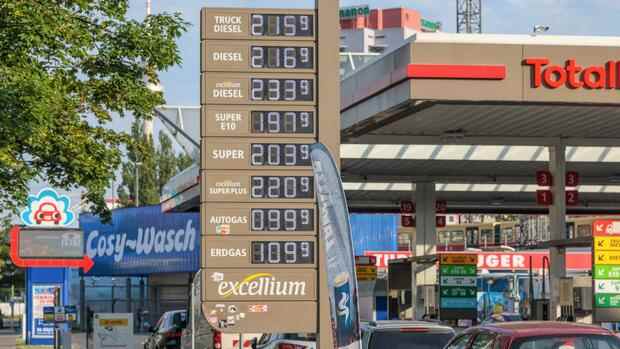Bangkok The West’s conflict with Russia has brought lucrative business to Indian multi-billionaire Mukesh Ambani: in recent months he has been buying Russian oil at discount prices for his refineries on the west coast of the subcontinent. The head of the Reliance conglomerate shipped the end products diesel and petrol to Europe, among other destinations – and made lavish profits in view of the rise in world market prices.
But India’s government is now putting the brakes on the lucrative deals of crisis profiteers like Reliance: on Friday it announced new export tariffs for petrol and diesel. With this step, she could ensure a further price increase at European gas pumps.
India was recently one of Europe’s most important fuel suppliers – and expanded export volumes significantly after the start of the Ukraine war.
According to the government, however, the high margins that India’s refineries achieve abroad have led to shortages of petrol and diesel on the domestic market. “Because exports are currently so profitable, we are seeing some refiners drying up their pumps in the domestic market,” the New Delhi Treasury said.
Top jobs of the day
Find the best jobs now and
be notified by email.
Despite India’s extensive production capacities, the country has increasingly had to import fuel from abroad in recent weeks. Diesel imports are at their highest level since February 2020.
Tariffs are now supposed to reverse the trend: India’s government will demand an additional tax of 13 rupees – the equivalent of 16 cents – from exporters for every liter of diesel exported. A surcharge of six rupees is due for petrol. In addition, the companies are obliged to supply the domestic market with a quantity of fuel that corresponds to at least half of the export volume.
India buys cheap oil from Russia
Indian refiners’ stocks plummet after the announcement. The shares of Ambani’s Reliance group temporarily fell by around nine percent on the Mumbai stock exchange. The paper of the diesel producer MRPL was ten percent in the red.
Fuel export business model.
Europe’s motorists are also affected by the rise in the price of Indian fuel exports: since the start of the war in Ukraine, the petrol and diesel manufacturers in Asia’s third largest economy have positioned themselves as an important alternative to supplies from Russia. According to data from the service provider Vortexa, India sent 540,000 tons of diesel and gasoline to Europe in May – 50 percent more than in the same month last year.
Indian suppliers were thus ahead of those from Saudi Arabia and the United Arab Emirates. However, at 2.6 million tons, the majority of Europe’s fuel imports still came from Russia.
>> Read also: The traffic light discusses these reliefs
India’s offer to make Europe less dependent on supplies from Russia was at least in part only a sham. It is very likely that the Indian fuel for the European market will be produced at least in part with Russian crude oil.
While the West is increasingly turning away from Russian oil, India has become a major customer: According to data from the service provider Kpler, Indian customers bought an average of 1.2 million barrels a day from Russia in June.
This means that Russia is likely to have become India’s main supplier for the first time. Before the Ukraine war, India had only purchased small amounts of the raw material from Russia.
Treasury raises tariffs on gold imports
Tycoon Ambani, one of Asia’s richest men, got more than a quarter of his oil from Russia in May, according to a report by the think tank Center for Research on Energy and Clean Air. In the previous month it was only five percent.
According to the analysis, a fifth of his group’s cargo ships made their way through the Suez Canal, which suggests that they were traveling towards Europe or America. Whether or how much fuel from Russian oil is in them is not known.
Fuel shortages have been reported in India in recent weeks, including in the state of Gujarat – the home of Prime Minister Narendra Modi. Rising fuel prices are also driving India’s inflation rate, which is currently around seven percent.
The weakness of India’s national currency, the rupee, which fell to an all-time low against the dollar on Friday, threatens to exacerbate inflation via higher import costs. In order to support the currency, India’s finance ministry also increased import duties on gold on Friday, which is traditionally in high demand in India – including for wedding celebrations.
More: Plus 8.6 percent – energy and food prices drive inflation in the euro area to a record high
